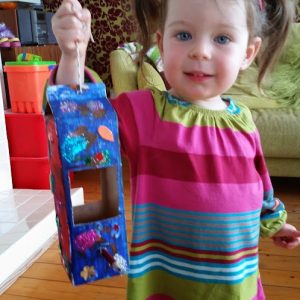Feathered friends
Birds are very pretty, they sound nice and they help us gardeners control pests and weeds. Did you know that more than 140 different types have been spotted in our gardens during surveys like the Big Garden Birdwatch and that 30 different types are found very often?
At this time of year the birds are very busy singing and making nests so it’s a great time to help them out. I’ve got some wise words to help you do that and a fun craft project for you to make your own colourful birds.
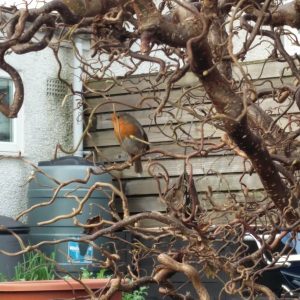
A robin came to visit our garden
Feed the birds
Just like me, lots of birds have favourite foods so the type of food you put out will make a difference to the type of birds that visit your garden.
The clever people at the Royal Horticultural Society have made up this list:
- Insect cakes for tits
- Berry cakes for finches
- Finely chopped animal fat and grated cheese for small birds, such as wrens
- Sparrows, finches and nuthatches enjoy eating the seeds from sunflower heads. Also, leave seed heads on herbaceous plants overwinter
- Niger seed for goldfinches
- Peanut cakes for starlings
- Fruit for thrushes and blackbirds. Scatter over-ripe apples and raisins on the ground for them
Remember that the feed should not be in bigger chunks. If the mummy and daddy birds feed chunks to their babies it could cause them to choke.
The plants that you grow can also provide berries or seeds for birds. Native berry producing plants you might have in your garden include blackberry, elderberry and hawthorn. Bird friendly plants someone might have planted include crab apples, honeysuckles, and sunflowers.
As I told you in my Big Garden Birdwatch blog, where you put the food will also affect the types of birds that you see. Finches, sparrows and tits like hanging bird feeders. These are best placed over paved or decked areas so you can sweep away and mess and prevent scavengers like rats taking advantage of the feed too. Bird tables are good for robins, sparrows and doves. Just don’t put them too close to trees were predators could jump from whilst birds were feeding. Blackbirds thrushes, and wrens don’t have the 3 second rule and are happy to eat their food from the ground.
Shelter the birds
To help the birds make homes in which to have their baby birds, you can hang up a nesting box. It’s best to do this on a wall rather than tree if you can as it makes it safer for the baby birds as cats and other animals can’t get to it. A north or north-east direction is ideal as it is less likely to get too hot.
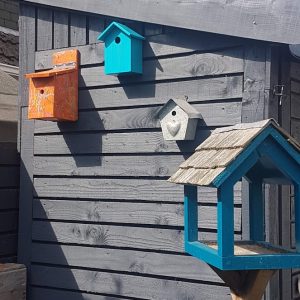
We have several bird boxes to choose from
Make your own bird
How about making your own colourful spring bird? (thanks to Happy Hooligans for the idea.)
- paper plates
- card for beak
- googly eyes (or darker card for eyes)
- white paper
- crafting decorations such as feathers, crumpled tissue paper, shiny cellophane
- paint
- glue

Tilda is trying to steal my lovely bird plates!
Big Fun with the RSPB Big Garden Birdwatch
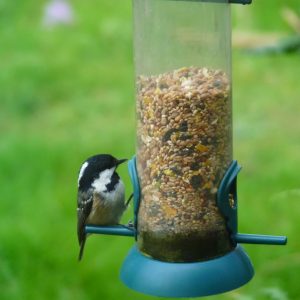
A coal tit came to visit
What is the Big Garden Birdwatch?
The Big Garden Birdwatch is a survey of the birds you can see in your garden or nearest green space and has been running since 1979- that’s so old (almost as old as Mummy and Daddy). It helps brainy conservationists learn how healthy the countryside is and if the numbers of any bird types are dropping so we can give them extra help.
Did you know that gardens make up about 4% of the UK’s land and that birds come into our gardens for food and shelter when conditions in the countryside get really hard?
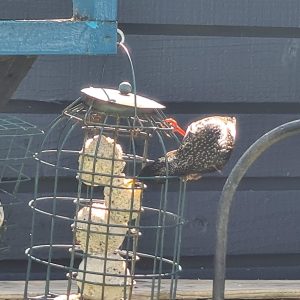
Starlings love the fat balls in our garden
What do you need to do for the Big Garden Birdwatch?
This year’s Big Garden Birdwatch is happening on January 24th and 25th and is really, really easy to be part of:
- Get your Mummy or Daddy to help you register online
- Spend one hour watching and recording the birds that come to your garden (it doesn’t matter what time of day)
- Submit your results online
- Feel all smug that you’ve helped gather super important information to help the birds
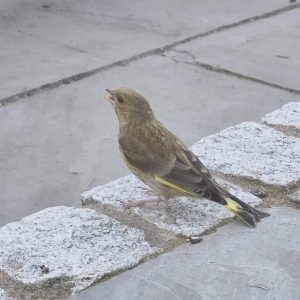
A beautiful greenfinch in our garden
What you might see in your garden
I recently reviewed the fabby RSPB book on how to identify the different birds you might see in your garden and how to make a trendy bird feeder to encourage them. But you don’t need to have that book as the Big Garden Birdwatch website has great pictures of each of the different birds you might expect to see in your garden.
The birds you might see will depend upon the food they can find in your garden and the type of feeder you use.
Blue tits, and Great tits like seeds in hanging feeders.
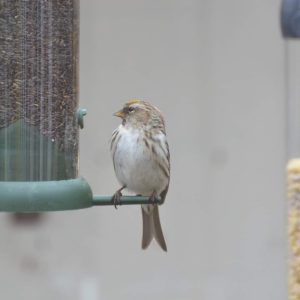
This common redpoll came for a visit
Blackbirds and wrens like their food to be scattered on the ground.
House sparrows and Bullfinches aren’t fussy and will eat food from any location.
The Big Garden Birdwatch website even has a super cool live bird counter that you can use on a computer or smartphone. It has hints and tips and lots of fun facts to learn whilst your doing your important work.
If you prefer furry or scaly creatures to birds then you’ll be happy to hear than you can also count the number of squirrels, hedgehogs, badgers, deer, grass snakes or slow worms.
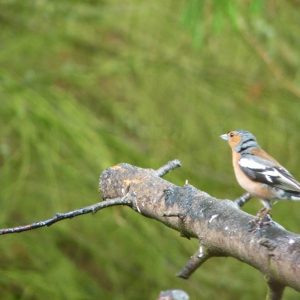
A beautiful chaffinch
I’d love to hear what birds you see in the Big Garden Birdwatch.
Happy bird spotting!
Wild Child!
Sometimes M&D say I am a wild child – I think they mean that as a compliment 😉 Wildlife are wonderful creatures and we are always looking for ways to encourage them into the garden as they help us gardeners with pests. (1) At this time of year we need to pay particular attention to helping out our furry (or not so furry) friends. So here are my top and super-easy ways to help look after the wildlife in your garden over winter. Oh and a cute hedgehog project you can do one evening as it’s too dark to go out and play…
Be a bit messy!
Now isn’t this just the best tip ever?!? An overly tidy garden means there are less places for wildlife to hide. So leave a few piles of leaves or upturned pots in quiet areas of the garden and you may find some invertebrates or hedgehogs come along and make a home for themselves. Ladybirds gather in large clusters on dead plant stems in quiet areas of the garden so don’t prune plants too much just now, wait until the end of winter. Also, avoid cutting your hedge until the end of winter so as not to disturb nesting birds or remove any berries. Wonder if this messy logic applies to my bedroom…

A ladybird in our garden
Empty nesters!
If you haven’t already done it, clean out those nesting boxes so that birds have somewhere cosy to shelter through winter. Double check no-one is in there nesting already before you disturb them though!
Feeding Time
It’s important to feed our wildlife over winter when their natural source of food isn’t readily available. As well as using traditional seeds, peanuts, fat balls etc on bird tables and feeding stations consider the planting in your garden. Berries and seedheads are popular with many birds as well as looking pretty and adding winter interest. And windfall fruits can provide food for wildlife. Remember to clean out our bird feeders regularly and keep them hygienic. (It’s not just us kids that have to wash our hands and stay clean!)
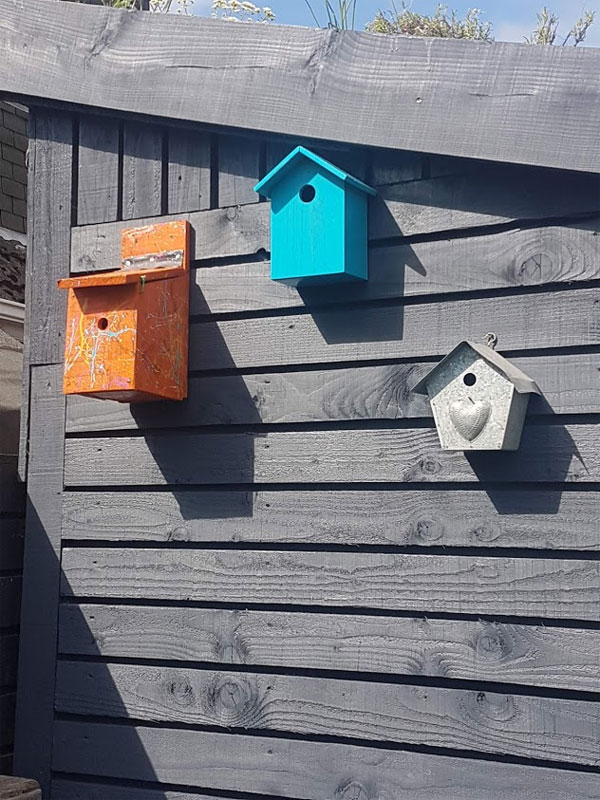
Clear out your bird boxes ready for new visitors
Hole in One
Ask a grown up to drill some holes into old logs or some left over wood your M&D may have left over from a DIY project and leave them in a quiet corner. Insects and bees will make a home here over winter.
Perfect Planting
Winter is a great time to review your garden and think you want to do in the year ahead. If there are plants you don’t like too much and aren’t providing much for wildlife or providing winter interest then look at removing some and adding in some lovely new plants that wildlife adore like foxgloves, verbena, echinops, sedum or plants with berries such as holly, skimmia and rowan.
Hopefully all sorts of wildlife will now have a cosy home and plenty to eat in your garden. But if you want to have some wildlife in the house then why not try this great hedgehog craft project…
Hedgehog Hands
You will need:
- Some coloured paper
- Pencil
- Scissors
- Toilet roll tube
- Pom pom
- Googly eyes
- Glue
To make:
1. Draw round both hands on some coloured paper. To make it quicker, put four sheet of paper together so you can cut through them all at once. Do this again on another colour of paper to create contrasting spikes. We chose brown and orange as they are nice and autumnal but any colour would be fine. I think a purple and pink glittery hedgehog would be cool!
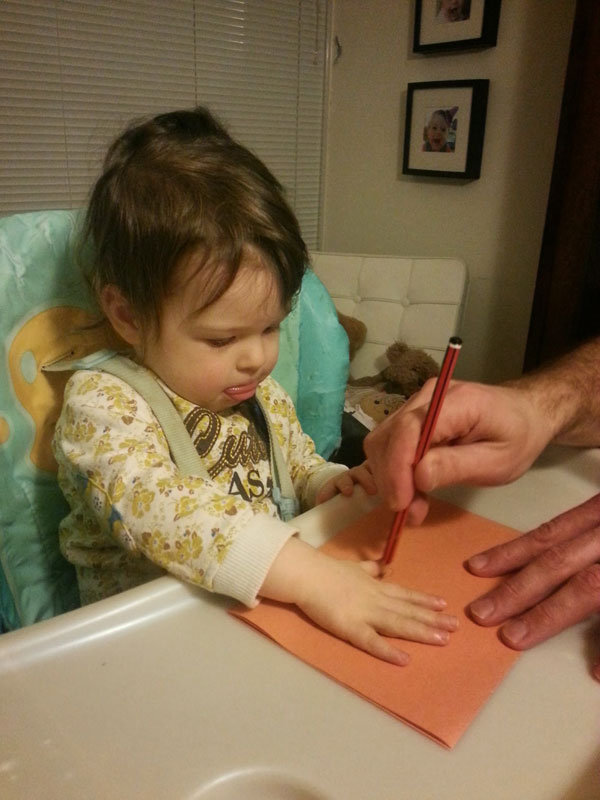
Draw round your hand on coloured paper
2. Take a toilet roll and ask a grown up to cut it down a little smaller. Then cut it in half long ways to open it up. You then need to roll it again at a diagonal so that it forms a cone. Glue it in place and then cover with some coloured paper.
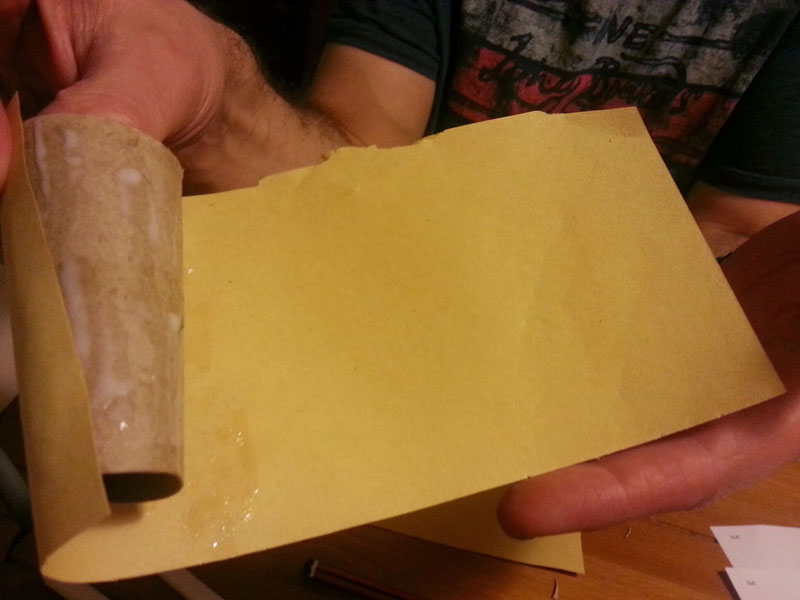
Make your pointy face from a toilet roll and coloured paper
3. Glue your paper hands onto a piece of card to make the hedgehogs spikes.
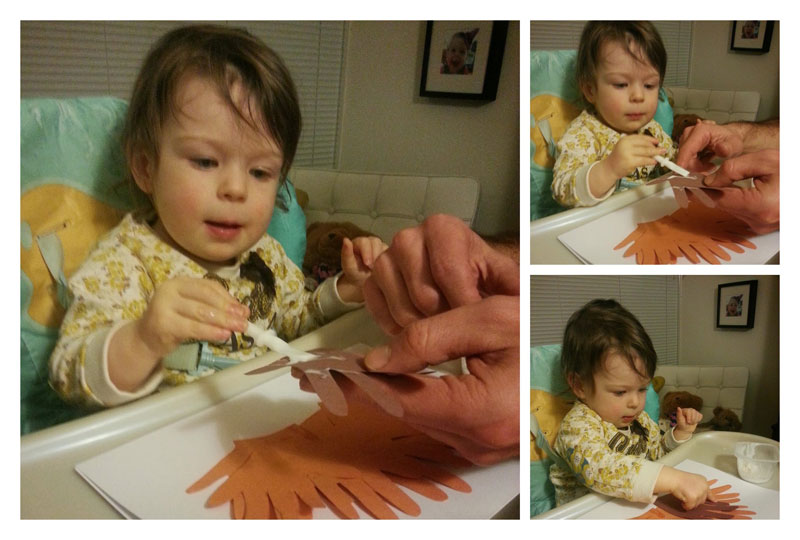
I love gluing and sticking!
4. Glue your cone onto the hands to make a pointy face. Add the pom pom to the end to make a nose and add some googly eyes (or buttons) to the face.
5. Fold up the spikes a little to make them spikier and more 3D.
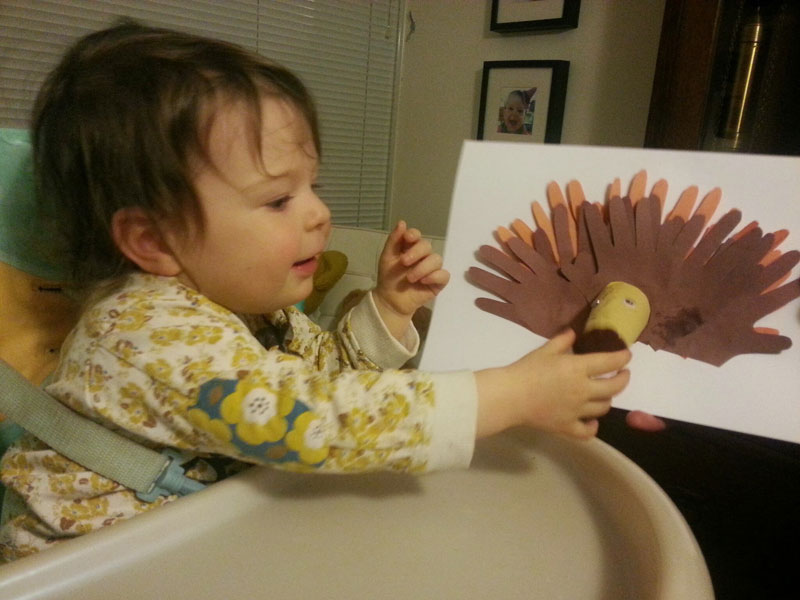
The finished 3D hands hedgehog
1. Sometimes M&D call me a pest too but I don’t think that’s a compliment!)
Thanks to the clever people at Fantastic Fun & Learning for the inspiration for this project.
